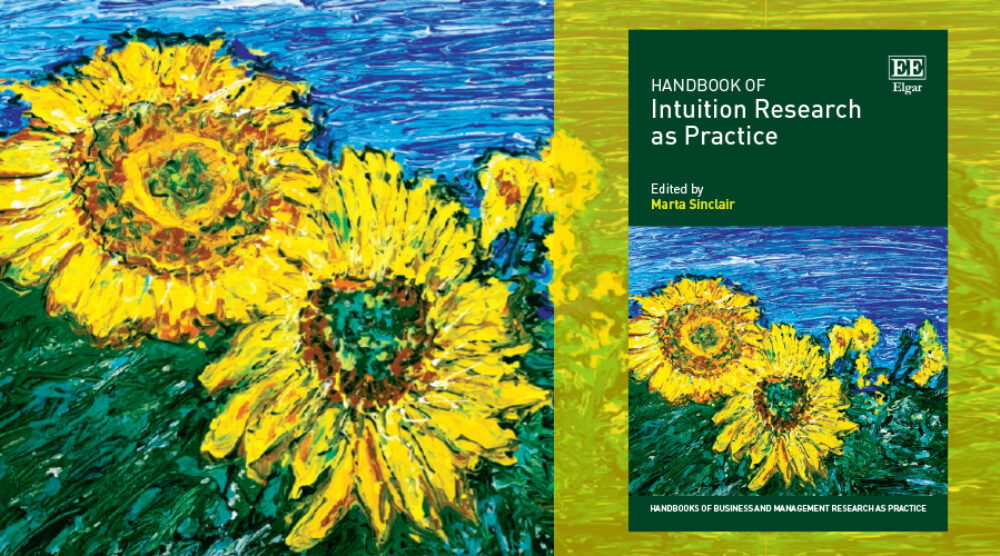As the use of intuition in business has become more widely accepted, companies struggle to understand how to use this additional resource efficiently, while corporate trainers and university educators lack tools to develop it as a skill. Intuition is gradually entering the mainstream, as theorists and practitioners alike call for new ways to conduct business and survive in the 21st century.
While new intuition theories are being developed and (sometimes) tested, very few of them are converted into practical training tools. On the other hand, intuition practitioners find it challenging to explain what works for them and their clients by the existing theory.
In response to the growing concern about the existing gap between theory and practice, Dr Marta Sinclair from the Department of Business Strategy and Innovation has published an international handbook titled “Handbook of Intuition Research as Practice”, the third in the series by Edward Elgar, providing relevant answers in a concise, digestible format using real-life examples and new research.
Due to its focus on bridging theory and practice, the handbook is of value not only to academics and organisational researchers but also to industry professionals, corporate trainers and university educators who search for answers on how to incorporate intuition into a common skill set. Accessible in style, it will also appeal to educated business readers.
“As a culmination of more than a decade of research into the role of intuition in organisational settings, Marta Sinclair’s latest Handbook “brings the chickens home” by emphasizing the practical effects of intuition. Moreover, with contributions spanning 18 different countries, the international scope of volume is especially remarkable.”
Neal Ashkanasy, The University of Queensland, Australia
One common thread through the handbook is the interaction of intuition and reasoning, although researchers use different terms that do not always fully overlap, such as rationality, deliberation or analysis. Sadly, this phenomenon is still mostly investigated in the context of decision making. Not enough attention has been paid to problem solving so far. Another common theme interwoven throughout the handbook is the role of emotions, feelings and/or physical sensations in intuition. Several chapters address also the question of group intuition, even though not much empirical research is available yet.
The presented studies encompass a variety of professional settings, ranging from finance to nursing and military crisis management, that explore what is happening at the workplace and how we can capture it for practice. There are also several contributions that investigate specific characteristics of decision making among entrepreneurs. A wide range of field settings and methods is represented, yet all chapters have something in common: They paint a picture of a sophisticated interplay between intuition and reasoning, confirming that these often function in tandem for an optimum result.
Multiple chapters also demonstrate that non-conscious emotional stimuli may influence decision-making behaviour and deployment of intuition, especially when cognitive resources are tied up elsewhere. A rather provocative idea suggests that humans may process intuitive information differently through three nervous centres: brain, heart, and gut, where empirical research indicates that the overall balance across the centres may impact performance. Interestingly, heart appears to be the only receptor with a distinct gender difference. This conclusion is supported by findings that emotion-infused factors trigger a stronger intuitive response in women. Regardless of gender, emotions have a strong presence in moral intuition, which should be utilised in leadership training and development.







